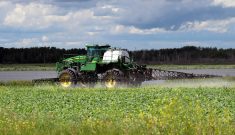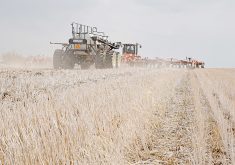For the next couple of days I’m following along a group of farmers as they take part in the Combine to Customer program. I’m going to update this post throughout, so check back here to see what’s new.
Don’t tell me the industrial tooling of pasta-making isn’t beautiful. (But don’t drop these heavy brass molds on your foot.)
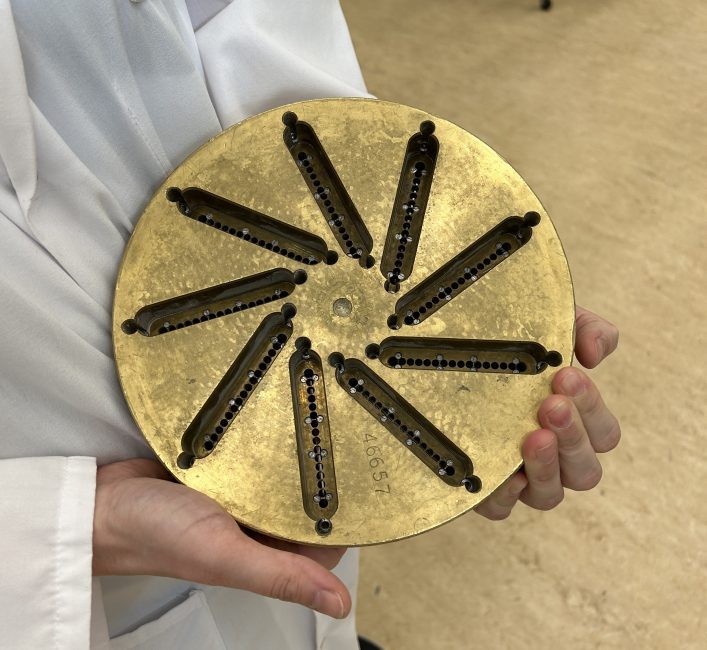

The chemistry and other science of flour milling. Mechanical engineering as a food science

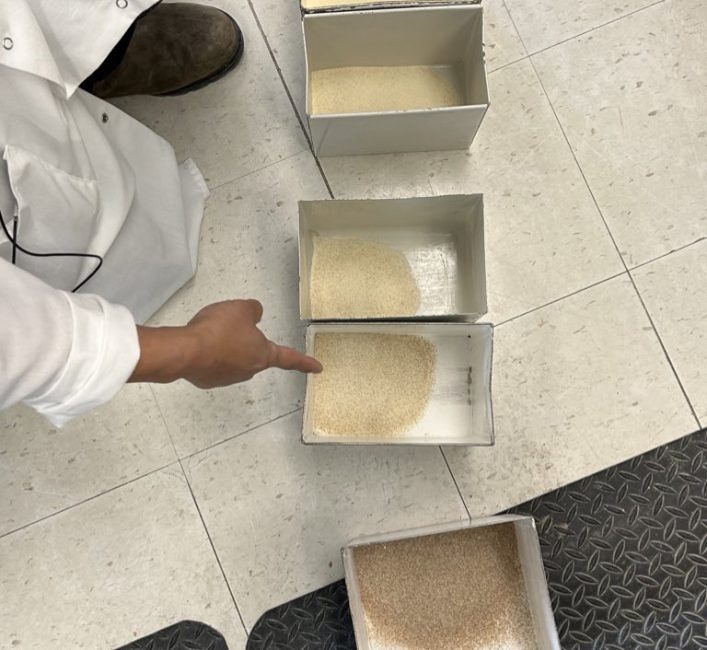
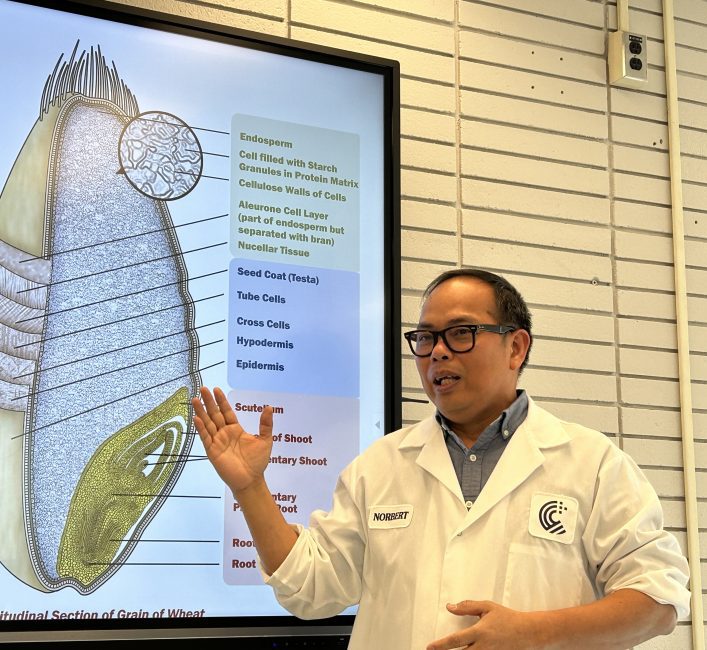
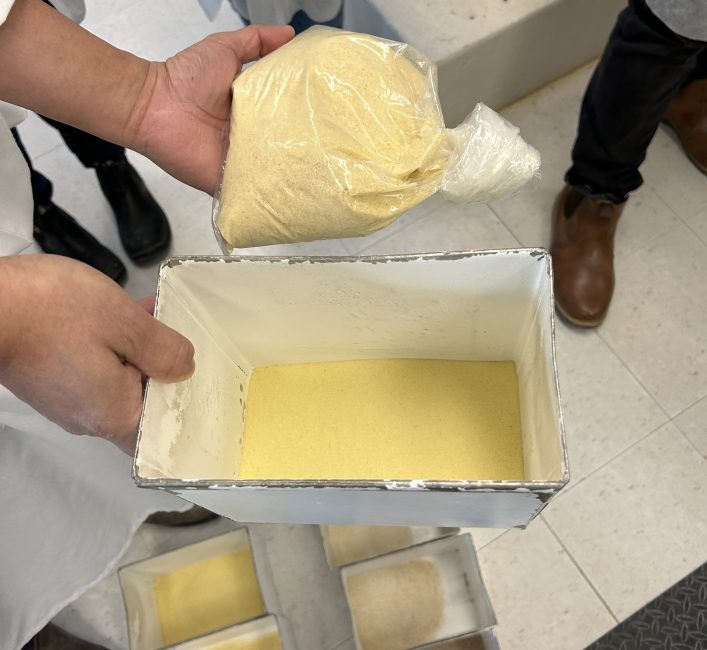
Recent drought and other challenges have crimped Canada’s grain production, market analyst Leif Carlson notes, but the last time Canada had a major drought – 1988 – yields were only half of what they were in the recent drought. That ability to make Canada’s wheat yields able to stay relatively high even in bad conditions is what keeps Canada in the world markets year after year.

“We’ve only scratched the surface of genetic improvements we can make.”
Curt McCartney explains the “pipeline” of variety development research, which produces the handful of varieties farmers get to consider growing. It’s not an easy process, but it provides continual improvement.
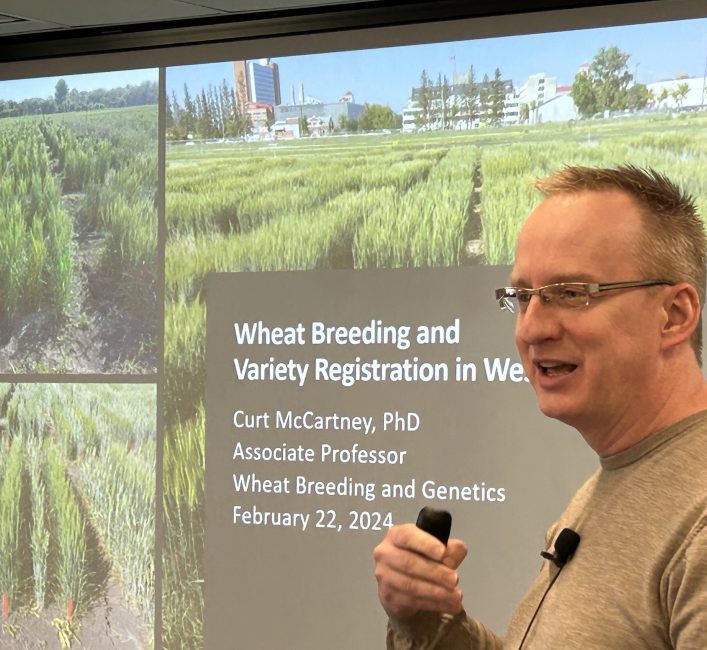
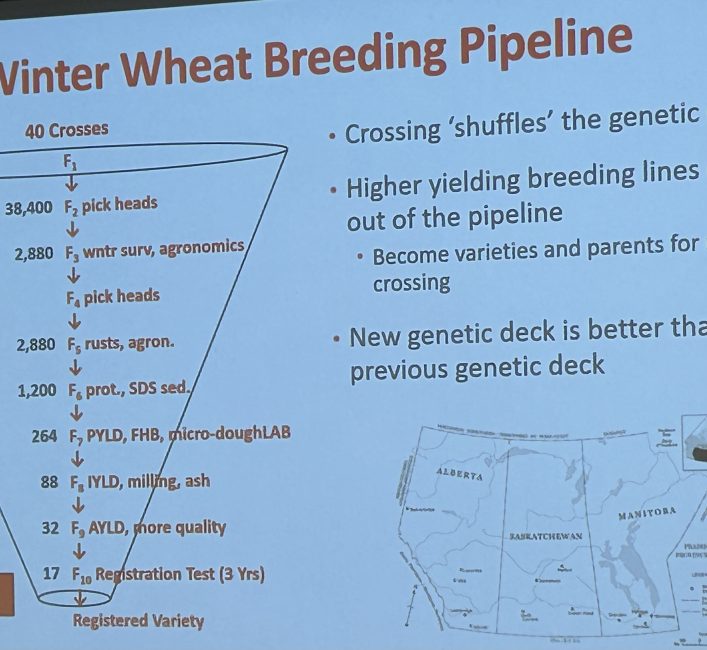
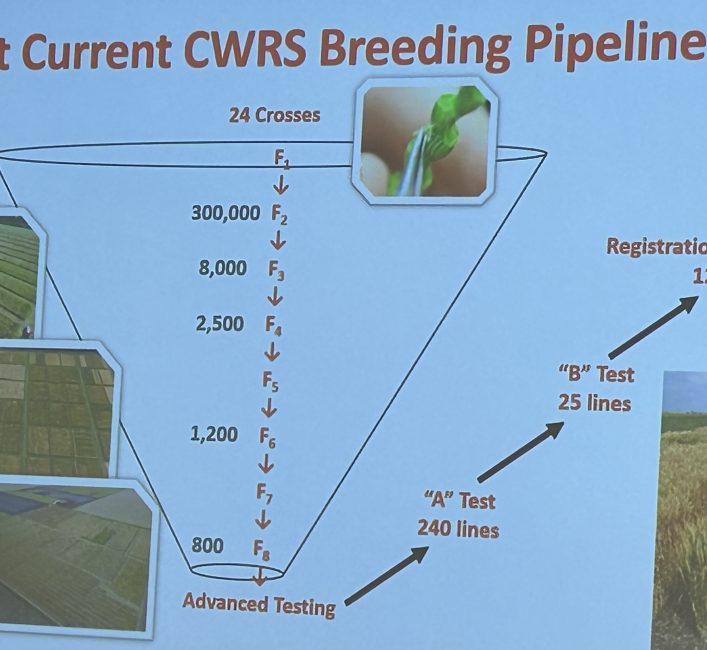
Kristina Pizzi led farmers through a breakdown of the types of wheat grown in Western Canada and eastern Canada. Did you know eastern Canada has seven wheat classes? I didn’t. Western Canada has ten. It’s interesting for me to see how some of the big-deals in wheat classes have faded. I remember covering stuff about Canada Western Extra Strong. That doesn’t even show up on this pie chart these days. As Pizzi noted, it was talked about a lot 20 years ago. Also, I was interested in how small a deal Canada Northern Hard Red has become. Shunting those varieties off into their own class a few years ago pretty much stopped them piggybacking on the higher quality of CWRS and CPS varieties, and killed a lot of interest in growing them.
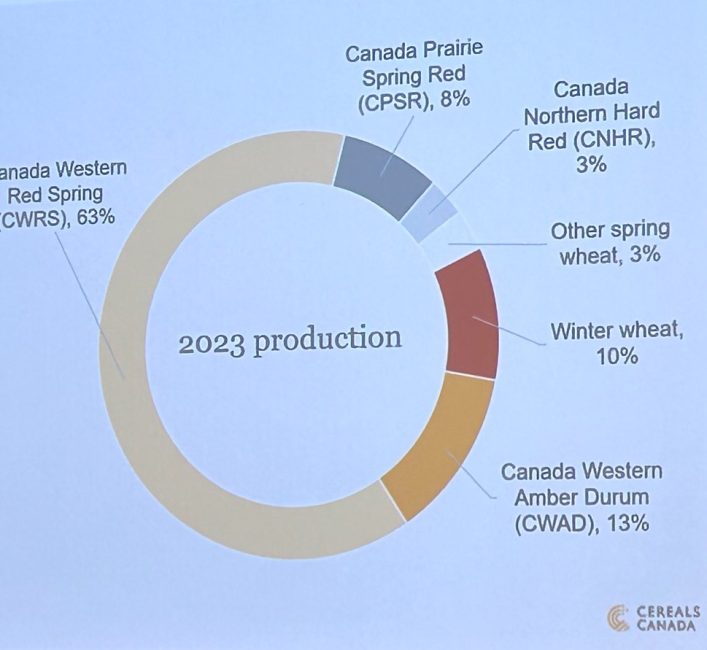
Cereals Canada CEO Dean Dias: “We learn as much from you as you learn from our teams.”
As a reporter, that’s what I find most interesting from events like this: what are the farmers interested in? What do they think?
Read Also

Feds propose overhaul of chronic wasting disease control program
Chronic Wasting disease control program getting updated by Canadian Food Inspection Agency with feedback encouraged from producers.

BEER! And BREWING! So exciting!
This afternoon the group toured the Canadian Malt Barley Technical Centre to see the purpose for the various specifications that farmers have to meet and are judged by.

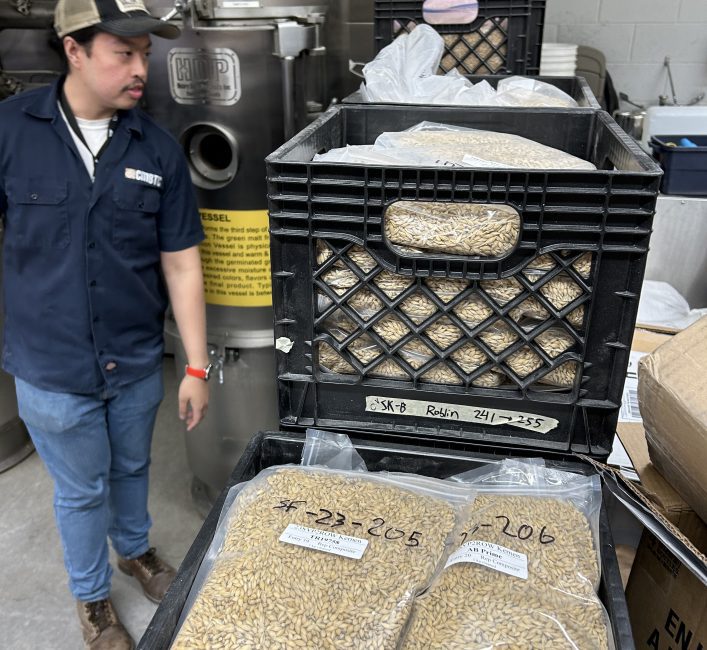
Noodles! There’s something fun and goofy about noodles, but it’s also a major use of Canadian wheat. Participants in the Combine to Customer program got to see CWRS dough get turned into noodles, then cooked and judged for chewiness, squishiness, bounciness and other characteristics that have more formal terms. The Asian noodle market is intensely competitive, with Australian wheat closer and more focused on that market, but Canadian wheat makes good noodles, which is what this facility shows to buyers.
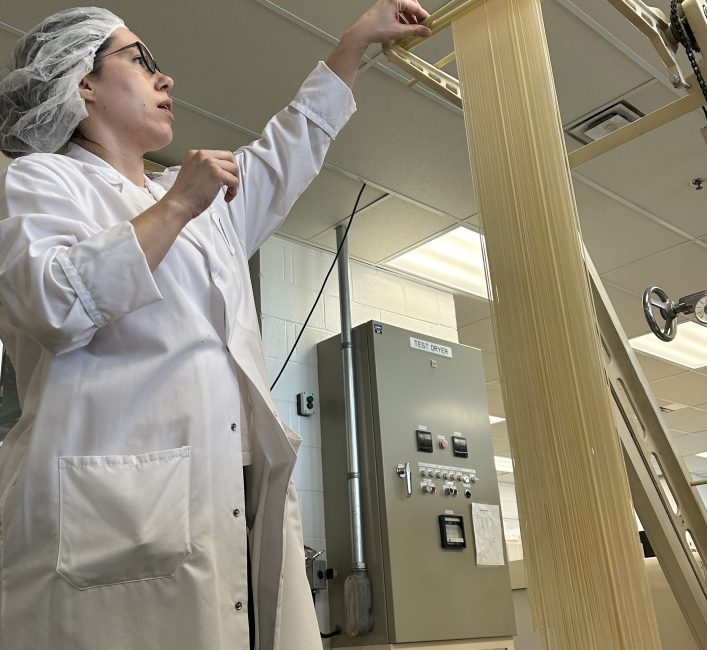

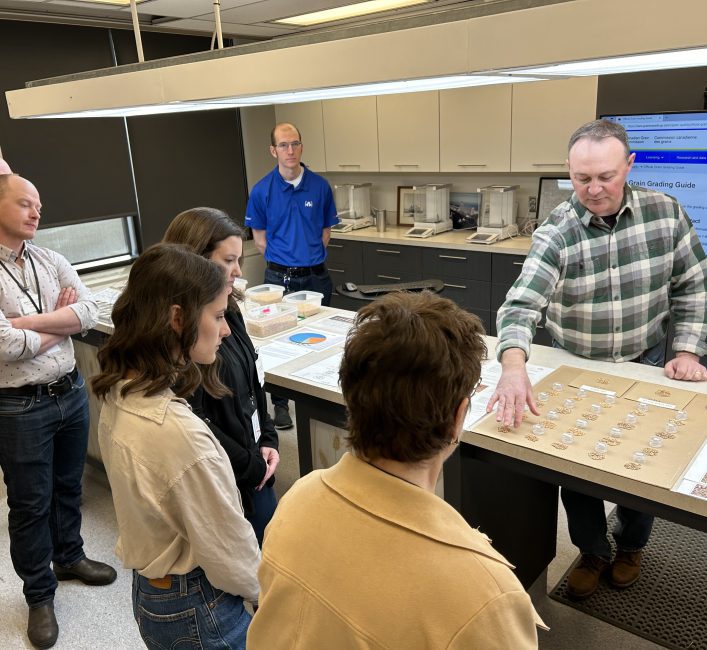
Canadian Grain Commission Inspection Trainer Chris Fleury shows farmers how various grading issues, from disease to bug damage to frost, are visually assessed by CGC staff and people in the grain industry.
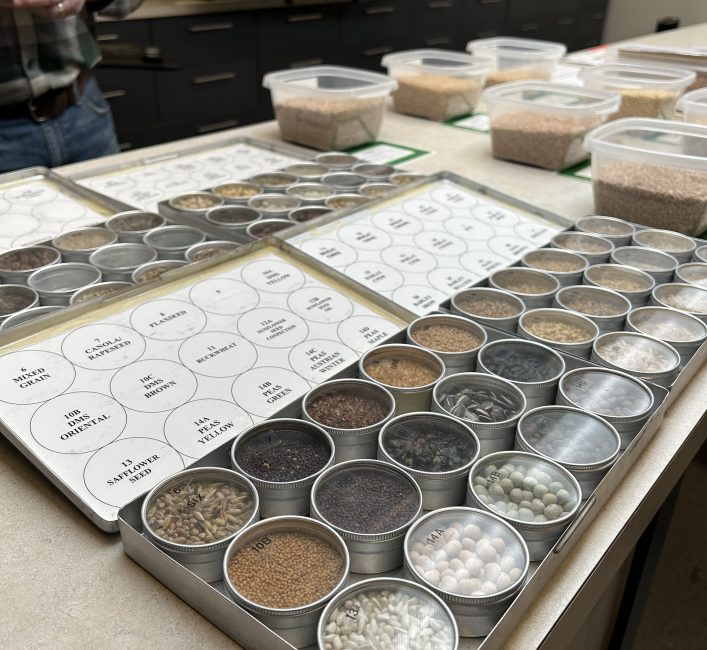


One element of this program is that farmers get to have face-to-face interactions with some of the people who operate and oversee our grain system. Right now Patty Rosher, Assistant Chief Commissioner of the Canadian Grain Commission, is explaining her agency’s role in guaranteeing Canadian grain quality and the financial security for farmers’ grain.
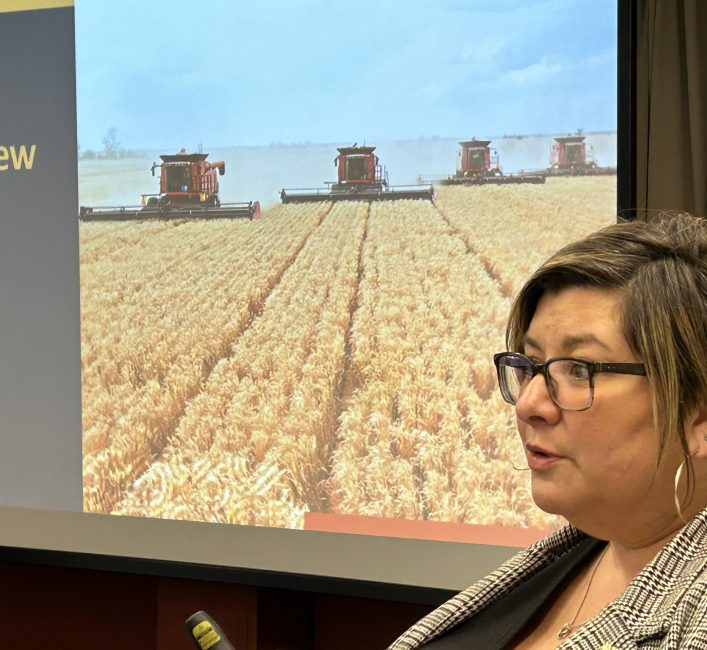
Ellen Pruden of Cereals Canada welcomes farmers to the Combine to Customer program in CC’s Portage and Main, Winnipeg HQ. The program has opened a window on the industry for farmers for years.




